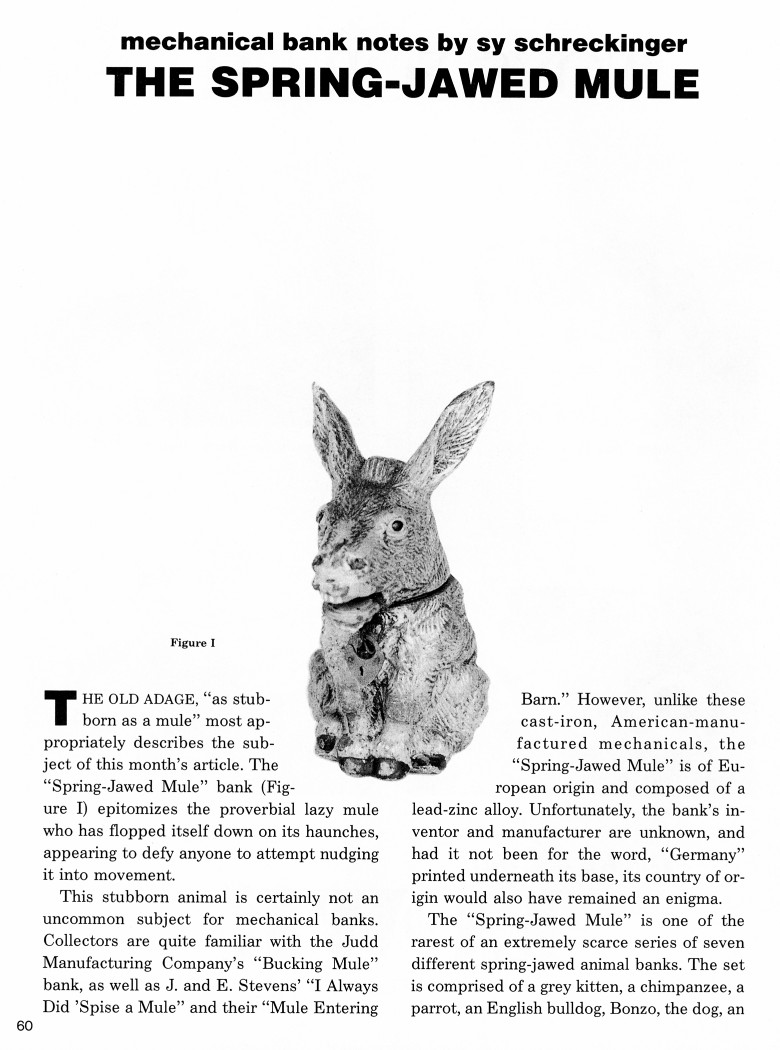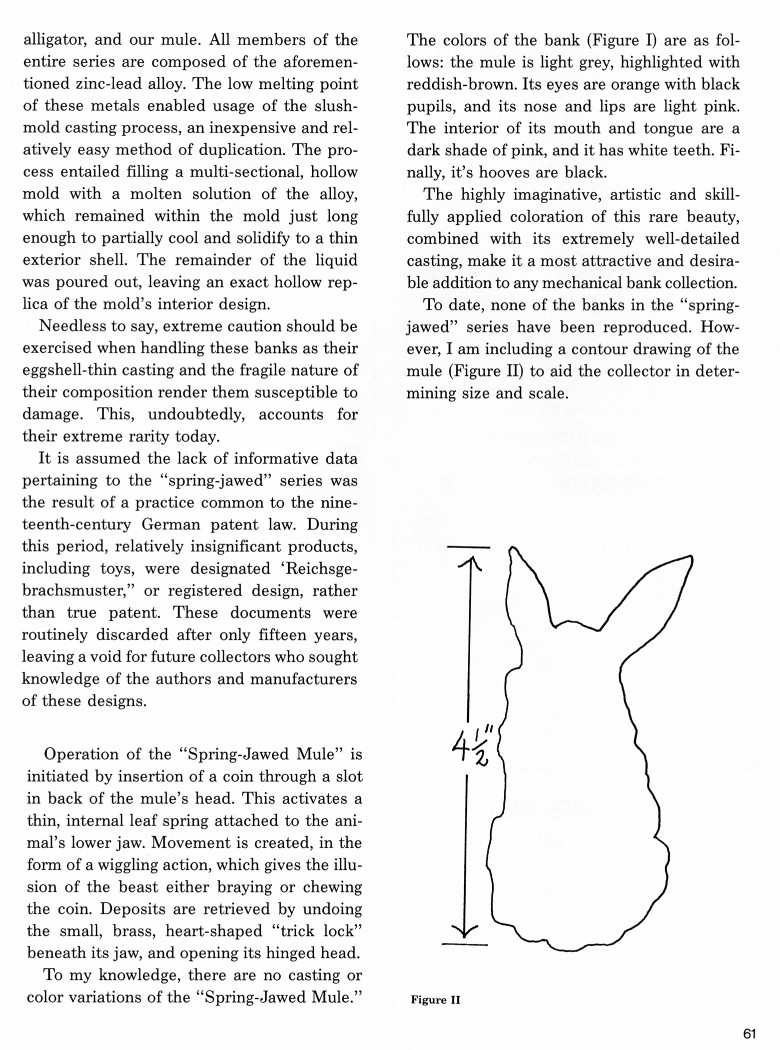|
The
Spring-Jawed Mule
by Sy Schreckinger – ANTIQUE TOY WORLD Magazine – February,
1991
The old adage, "as stubborn as a mule" most
appropriately describes the subject of this month's article. The
"Spring-Jawed Mule" bank (Figure I) epitomizes the proverbial lazy mule
who has flopped itself down on its haunches, appearing to defy anyone to
attempt nudging it into movement.
This stubborn animal is certainly not an uncommon subject for
mechanical banks. Collectors are quite familiar with the Judd
Manufacturing Company's "Bucking Mule" bank, as well as J. and E. Stevens'
"I Always Did 'Spise a Mule" and their "Mule Entering Barn." However,
unlike these cast-iron, American-manufactured mechanicals, the
"Spring-Jawed Mule" is of European origin and composed of a lead-zinc
alloy. Unfortunately, the bank's inventor and manufacturer are unknown,
and had it not been for the word, "Germany" printed underneath its base,
its country of origin would also have remained an enigma.
The "Spring-Jawed Mule" is one of the rarest of an extremely scarce
series of seven different spring-jawed animal banks. The set is comprised
of a grey kitten, a chimpanzee, a parrot, an English bulldog, Bonzo, the
dog, an alligator, and our mule. All members of the entire series are
composed of the aforementioned zinc-lead alloy. The low melting point of
these metals enabled usage of the slush-mold casting process, an
inexpensive and relatively easy method of duplication. The process
entailed filling a multi-sectional, hollow mold with a molten solution of
the alloy, which remained within the mold just long enough to partially
cool and solidify to a thin exterior shell. The remainder of the liquid
was poured out, leaving an exact hollow replica of the mold's interior
design.
Needless to say, extreme caution should be exercised when handling
these banks as their eggshell-thin casting and the fragile nature of their
composition render them susceptible to damage. This, undoubtedly, accounts
for their extreme rarity today.
It is assumed the lack of informative data pertaining to the
"spring-jawed" series was the result of a practice common to the
nineteenth-century German patent law. During this period, relatively
insignificant products, including toys, were designated 'Reichsgebrachsmuster,"
or registered design, rather than true patent. These documents were
routinely discarded after only fifteen years, leaving a void for future
collectors who sought knowledge of the authors and manufacturers of these
designs.
Operation of the "Spring-Jawed Mule" is initiated by insertion of a
coin through a slot in back of the mule's head. This activates a thin,
internal leaf spring attached to the animal's lower jaw. Movement is
created, in the form of a wiggling action, which gives the illusion of
the beast either braying or chewing the coin. Deposits are retrieved by
undoing the small, brass, heart-shaped "trick lock" beneath its jaw, and
opening its hinged head.
To my knowledge, there are no casting or color variations of the
"Spring-Jawed Mule." The colors of the bank (Figure I) are as follows:
the mule is light grey, highlighted with reddish-brown. Its eyes are
orange with black pupils, and its nose and lips are light pink. The
interior of its mouth and tongue are a dark shade of pink, and it has
white teeth. Finally, it's hooves are black.
The highly imaginative, artistic and skillfully applied coloration
of this rare beauty, combined with its extremely well-detailed casting,
make it a most attractive and desirable addition to any mechanical bank
collection.
To date, none of the banks in the "spring-jawed" series have been
reproduced. However, I am including a contour drawing of the mule (Figure
II) to aid the collector in determining size and scale.
|


